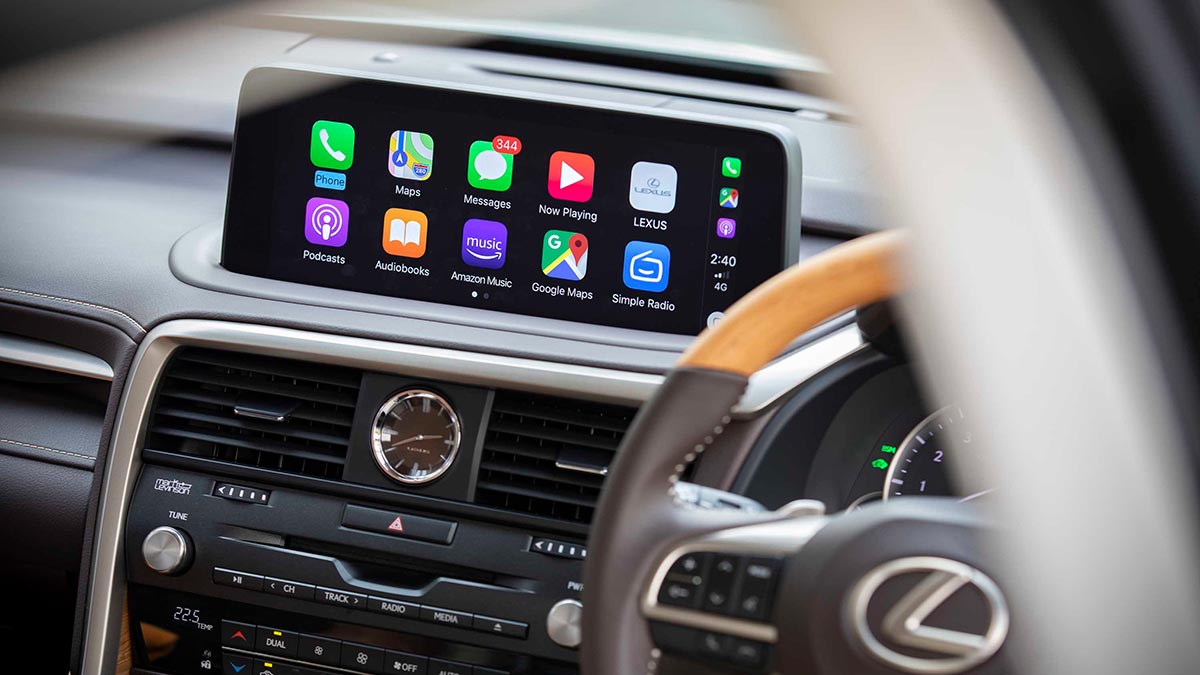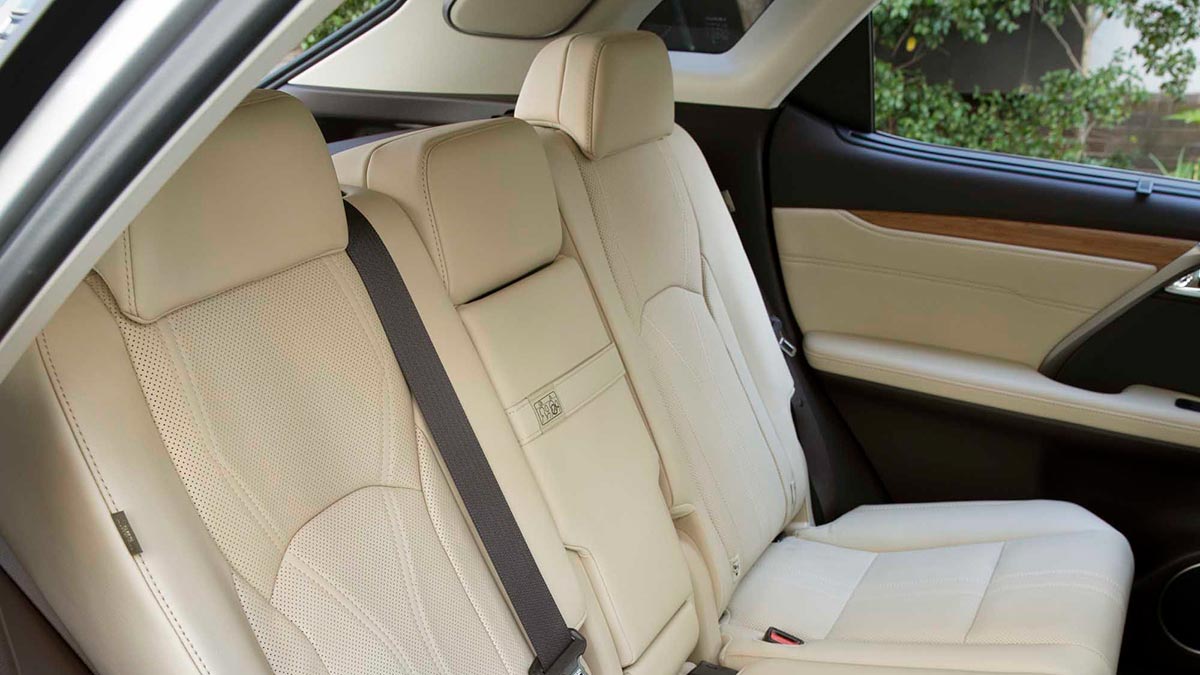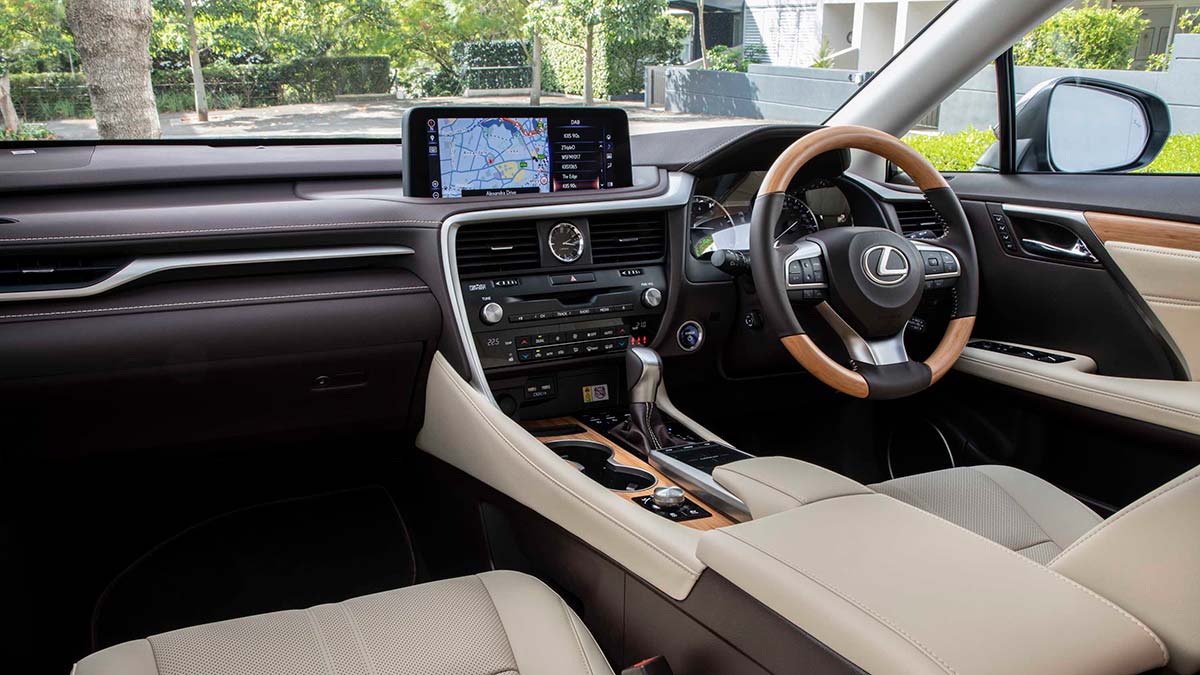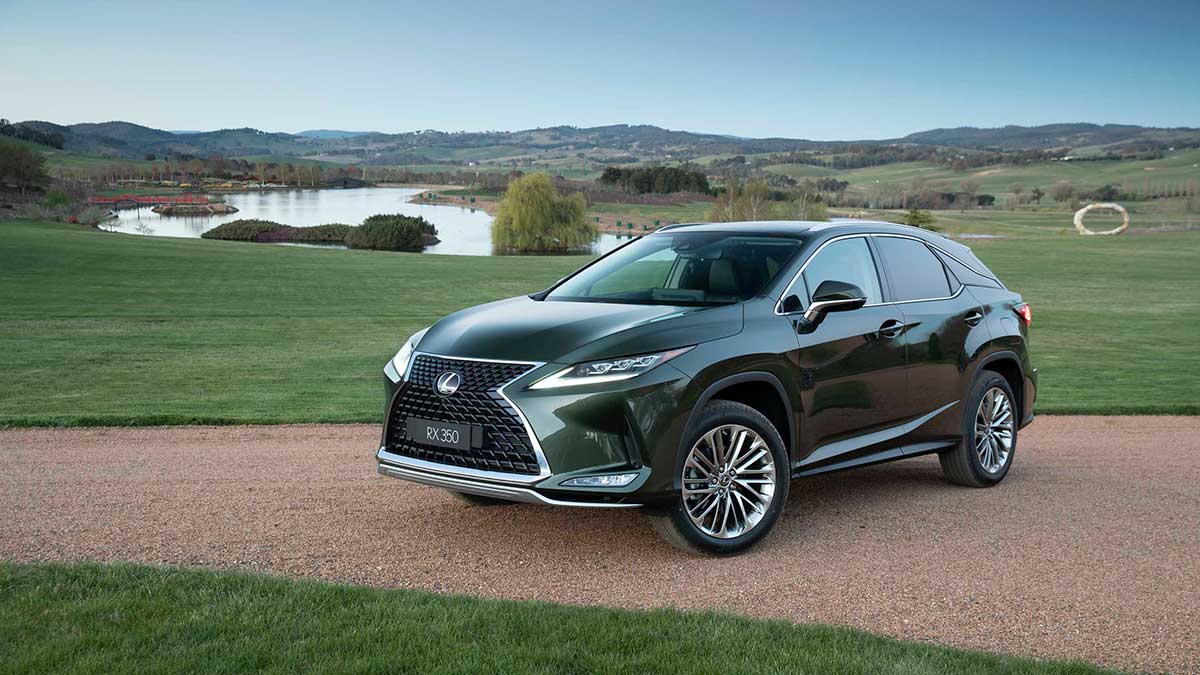SUVs have overtaken station wagons, sedans and hatches as the go-to family car over the past decade, but are they really the better option?
Lexus RX300 Sports Luxury 2020: Road test review

The Lexus RX300 Sports Luxury is a spacious and comfy ride packed with standard gear.
This year marked 30 years since the Lexus brand launched in Australia, disrupting the premium segment and putting the wind up the traditional European brands. Since then it has grown its market share and consistently been recognised for its exceptional customer experience. In that time the Lexus line-up has expanded and now is dominated by SUVs, including one of its most popular models – the RX. Prior to the COVID-19 lockdown in Victoria, we tested the new RX on a road trip from Melbourne to the New South Wales Central Coast.
Thumbs up
Smooth and comfortable ride, packed with high-end gear as standard, plush interior.
Thumbs down
Infotainment system and track pad still not great, not as dynamically capable as rivals.
Price and positioning
The current-generation RX arrived in late 2015 and received a mid-life upgrade this year. Improvements included tweaks to the chassis for better handling and the rollout of the latest safety and infotainment technology.
Rivals for the RX include the Audi Q7, BMW X5, Mercedes-Benz GLE and Volvo XC90, and like them the RX is available with a third seating row. Three powertrains are offered including a four-cylinder turbo petrol (RX300), V6 petrol (RX350) and petrol-electric hybrid (RX450h). Pricing ranges from $71,556 to $110,458 before on-road costs and we tested the five-seat RX300 in posh Sports Luxury guise ($92,336). Base Luxury and F Sport grades are also available.
RX pricing is closely aligned with the Volvo, but it undercuts the three Germans which all start north of $100k. Lexus continues to offer a generous standard equipment list and very few options. In this segment it represents unbeatable value, underscored by the inclusion of an expanded Lexus Safety System+ that now includes a pre-collision safety system with pedestrian and daytime cyclist detection.
The inside story
The Sports Luxury grade has a seriously plush interior, with well-cushioned seats that look as beautiful as they feel. The white leather trim and leather/wood steering wheel are an acquired taste. Other touches amplify the ‘luxury’ tag, including the lovely analogue clock in the centre of the dash, brushed aluminium panels, faux-velvet-lined glovebox and sumptuous carpet and mats.
The horizontal dash layout is well executed, but some of the dials look dated. Clever touches include expanding door storage to accommodate bigger bottles and a nook under the passenger side of the console.
The track pad that controls the now larger central display screen is clunky. Lexus’ infotainment system has improved, but if you’re not a fan, you can connect your phone with Apple CarPlay or Android Auto. Lexus’ sat-nav system will tell you if you’re approaching a red light or speed camera but you can switch this function off if it becomes annoying.
Forward visibility is excellent, but the oddly designed C-pillar creates a blind spot. The pillar and sloping roofline impede head room a little in the rear, but there’s ample space across the back pew for three occupants and loads of leg room. The premium experience in the second row include enhanced air vents, comfortable heated seats and a pair of USB ports. One-touch folding rear-seats are a welcome addition.
The 506-litre boot feels huge – although it can’t match the 630 litres of the Mercedes-Benz GLE – and there’s an additional 13 litres of storage space under the boot floor where the temporary spare wheel lives.

On the road
The RX300 uses the same 2.0-litre turbocharged petrol engine found in the IS sedan and the NX medium SUV. It’s a willing and responsive powertrain, but the RX’s extra 100 to 200 kilograms of weight over the NX blunts acceleration. If you’re after a quicker RX, you’d best opt for the hybrid or V6.
Under heavy throttle the 2.0-litre unit gets rowdy, but there’s little else to complain about. The cabin is kept mostly quiet, but some wind noise is evident. Unsurprisingly the hybrid variant is quieter on the road.
The six-speed automatic transmission is smooth as silk, as is the fuel-saving stop-start system which is barely detectable.
As part of the update, Lexus improved body rigidity and reduced body roll for more balanced cornering. It is evident, and appreciated, but the RX’s heft is noticeable when cornering, with some lateral movement in tighter bends. It can’t match the dynamism of the Porsche Cayenne or BMW X5, but large SUV buyers are generally more concerned about ride comfort.
Overall the ride quality is good. As expected of a Lexus, the RX feels controlled and smooth, particularly on the Hume Highway. It almost floats along on uneven roads, with only deep potholes upsetting the ride. There was some skipping when cornering on less-than-perfect country roads, and stability-control intervention, but the RX held its nerve.
The RX’s official fuel use figure is 8.1 litres per 100 kilometres and after our 1250-kilometre trip we handed it back with a figure of 9.8L/100km.
Safety first
You can feel the lane-trace assist system constantly making small adjustments to the steering to keep the car centred. It’s almost like a mild tug of war with the wheel. It does a good job for the most part but sometimes coming out of bends it takes a while to correct and before you know it you’re crossing over the lane. Still, it is much better than systems from some manufacturers that ping-pong the car between lane markings.
The adaptive cruise control successfully slows the RX behind slow-moving traffic, but it often exceeds the nominated speed when driving down a steep hill. It exceeded our designated speed by 8kmh more than once, which meant applying the brakes and then re-engaging cruise control.
The verdict
It might not corner like a Cayenne, but you won’t get this level of luxe comfort in another car for the same price.
|
Price |
List price: $92,336 plus on-road costs. Price as tested: $92,336 plus on-road costs. Model range: $71,556 to $110,458 plus on-road costs. |
|---|---|
|
Drivetrain |
2.0-litre four-cylinder turbocharged petrol engine, six-speed automatic transmission, front-wheel drive. Power: 175kW@4800-5600rpm. Torque: 350Nm@1650-4000rpm. Wheels: 235/55R20. |
|
Fuel |
95 RON petrol, 72-litre tank. Consumption: 8.1L/100km (government test), 9.8L/100km (RACV test). Emissions: 189g/km CO2 emissions. |
|
Safety |
Lexus Safety System+ with pre-collision safety system that includes pedestrian detection and daytime cyclist detection, lane-tracing assist, road-sign assist, rear cross-traffic alert, blind-spot monitor, colour head-up display, 10 airbags, five-star ANCAP rating. |
|
Features |
12.3-inch central display, Apple CarPlay/Android Auto, DAB+ digital radio, satellite navigation, voice recognition, 15-speaker Mark Levinson audio system, six USB ports, 14-way power-adjustable front seats. |
|
Warranty |
Four-year/100,000-kilometre warranty. Capped-price servicing over three years. Service intervals every 12 months or 15,000 kilometres. |






